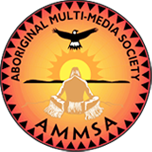Article Origin
Volume
Issue
Year
Page 13
Protocol and etiquette.... the ancient way to honor traditions, and acknowledge the ancestors, animal spirits and the Creator.
The bottom line...positive, respectful behavior at all times, with no drugs or alcohol ever allowed on the grounds in powwow country.
Powwow is an annual of song, dance and ceremony that comes full circle each year after a whole year of careful planning and hard work. With a keen eye to honoring Native tradition, part of that work and planning involves a deep regard and acknowledgment of the elaborate etiquette and protocol that binds Aboriginal people together.
Veterans and Elders have an honored place at the powwow. Respect must be shown at all times.
There is a fine line between protocol at traditional and competitive powwows. The hospitality differs slightly as do the public and private ceremonies.
Competitive powwow, by its very nature, is fast paced, high-pressured and commercial. Today's competitive powwows draw large crowds and boast commercial midways that include food concessions, craft booths, bingo, and handgame tents.
The pressure of dealing with thousands of visitors, tourists, dancers and drum groups has created a need to separate sacred and public ceremonies.
Pipe ceremonies and prayers, which used to be held in the public dancing arbor, now take place in a separate lodge, keeping sacred objects like pipes and rattles away from crowds, children and women on their moon time.
Traditional powwow, on the other hand, is more relaxed and family oriented. The protocol of old time traditional powwow demands that guests, visitors and Elders be fed and looked after by the host reserve. This includes honorariums to all drummers and dancers to help with travel expenses, and wood and food delivered right to the campfires.
Protocol and etiquette for a dancer is the same at both types of powwow. The moment you take on the role of an initiated dancer, a great deal of pressure is put on you by the people, not only to perform, but to be a role model, to be honorable. When you put on regalia, you take on the essence of the sacred animal, honor culture, tradition and the Creator.
"Being humble should be the number one priority for any dancer, thankful that you are allowed to dance with the animals you wear. Your sweat and suffering are for the people, making people proud of who you are, showing your respect, because you represent them," said Elder Antoine Littlewolf.
One of the unwritten rules of powwow is that no one should touch another's regalia without first being given permission by the maker or owner. Eagle feathers, which traditionally are earned, and all feathers, for that matter, should be treated with special care. It's necessary to be humble and respectful to each feather being worn. The spirits of all animals being worn must be respected above all else.
Powwow is a time to celebrate real traditions, who First Nations people really are. The whole world is watching. What do they see?
Elders are firmly rooted in tradition-our source and inspiration. Correct protocol towards Elders and veterans includes shaking of hands as a sign of respect. They are also given a place of honor, the best seats in the house.
Powwow etiquette and tradition dictates that the grass dancers be the first to enter the arbor, symbolically stomping down the grass to provide a flattened circle for the rest of the dancers to follow. They enter the arbor from the south entrance and go clockwise with the drum, following the wheeling movement of the sun, moon and stars.
Traditional powwow is much the same, except that real grass and fresh poplars often gives an open air arbor a more natural feeling.
Competitors and performers take part in the opening and closing ceremonies. Intertribals are open to everybody, with or without regalia.
Traditional powwow is unique in the sense that people come out, not only to honor culture but also to have a lot of fun.
Non-Aboriginal spectators are often encouraed to borrow some gear and try the dancing themselves. Switch dancing, in which men and women swap regalia and compete for fun, is an ancient and honorable way to have a good laugh, as is the mysterious clown dancers who often dance backwards and provide a wonderful comic relief.
The powwow is perhaps the most important public celebration that we have. It's a time to renew our ties to the earth, the animal spirits and fellow humans, to show our best face to the world.
- 1259 views
